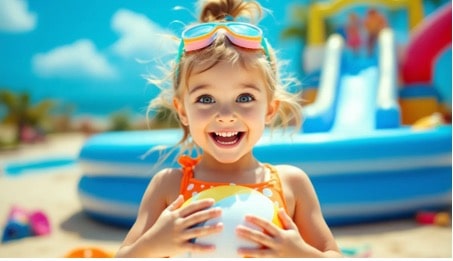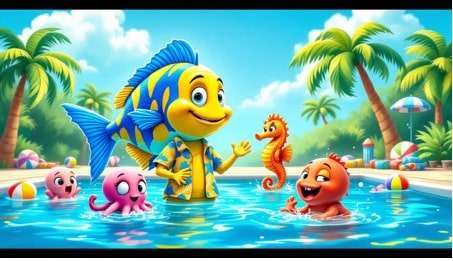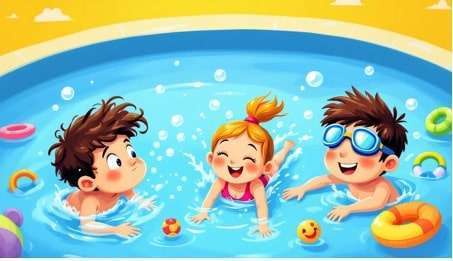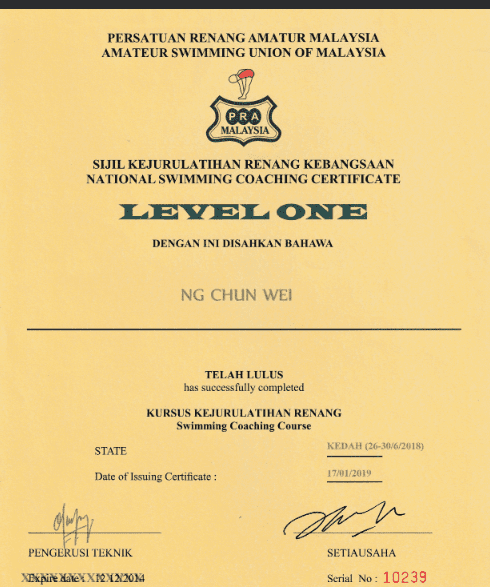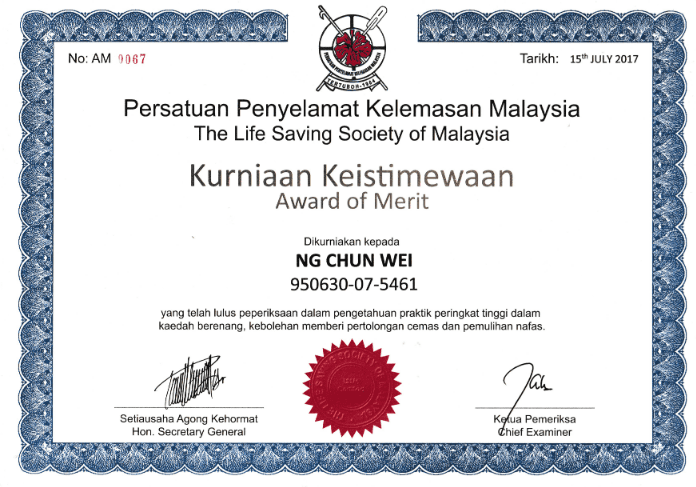Worried about your child’s first swim lesson? You’re not alone. Many parents seek practical first swim lesson tips to ensure a smooth start. We’ll guide you on preparation, meeting the instructor, and making the lesson enjoyable for your child. Let’s dive in!
Key Takeaways
- Preparing your child for swim lessons includes a light feeding before classes and introducing them to water at home to ease anxiety.
- Building rapport with the instructor and clear communication about your child’s needs enhances their confidence and learning experience.
- Positive reinforcement and engaging games can boost your child’s enthusiasm for swimming, making practice enjoyable and supportive.
Getting Ready for the First Swim Lesson
Preparing your child for swim lessons can be a delightful bonding experience. It provides a positive introduction to water, making your child feel more comfortable and excited. Feeling a bit nervous before the first lesson is perfectly normal. Experienced instructors are adept at easing any anxiety, ensuring the experience is enjoyable and stress-free.
Understanding what to expect can significantly ease your child’s jitters. Ensure your child has a light feeding about one hour before the class to prevent fussiness. For babies, feeding them 30-60 minutes before lessons avoids discomfort. Also, check that the pool temperature is comfortable, ideally around 29°C.
Introduce your baby to water at home with a warm, shallow bath to maintain a connection to water and smooth the transition to the pool. These steps will ensure your child is well-prepared and excited for their first swim lesson.
Meeting the Instructor
Building a good rapport with the instructor boosts your child’s confidence and willingness to learn. A friendly and approachable instructor can shape how your child perceives swimming lessons. Fostering trust between your child and their instructor enhances the learning experience and helps them feel confident in their abilities from the start.
Clear communication between parents and instructors is crucial to understanding your child’s progress and needs. Discuss any concerns or objectives with the instructor to ensure they can tailor their approach for your parent child.
Swimming instructors are trained professional knowledgeable skilled at teaching children of various age groups and skill levels. Swim instructors understand the instructor’s role and methods, helping you better support your child and fostering a supportive learning environment.
Understanding the Lesson Plan
Instructors will discuss the goals and expectations for the lessons beforehand to prepare. This helps align your objectives with the instructor’s approach. Sharing your goals ensures the teaching methods taught match your child’s needs and abilities, as well as those of other students.
Swimming lessons support gradual skill mastering, ensuring children understand and progress through each level. A positive and supportive learning environment fosters comfort and confidence in the water for learners. Instructors prioritize safety, which is essential for building confidence.
After the first swimming lesson, instructors often recap what was covered and may assign practice exercises to help children learn swimming. Look for swim classes at a swimming school that emphasize water survival skills and provide ongoing feedback. This structured approach helps children build a solid foundation while enjoying the process.
Essential Gear for Swim Lessons
Having the right gear significantly affects your child’s comfort and performance during swim lessons. A well-fitting swimsuit ensures it doesn’t slide off during lessons. For children not yet potty trained, swim diapers are essential. Choosing the right swimwear enhances comfort and performance, as heavier fabrics may weigh children down.
Goggles protect the eyes from chlorine and help improve swimming technique. Pack a towel for warmth after swimming and to avoid slip hazards. Flip-flops or water shoes are recommended for safe transit from locker rooms to the pool.
Organizing all swim lesson essentials in a gym bag helps keep track of everything. Practicing with goggles during bath time can familiarize kids with the experience before entering the pool. With the right gear, your child will be well-prepared and comfortable during lessons.
Water Safety Basics
Water safety is a fundamental aspect of swimming lessons. Instructors cover essential rules and guidelines to help children recognize potential hazards. Encourage children to swim in areas where a lifeguard is present for immediate assistance if needed.
Teaching children to wear life jackets when boating is crucial. Supervision is vital; adults should always watch children in and around water. Parents should understand various safety tips for drowning prevention based on their children’s age and behavior. Unsupervised access to water is a significant drowning risk for toddlers.
Proper use of flotation devices aids safety but should never replace adult supervision. Parents should model safe behaviors around water to reinforce their children’s learning. Following these water safety basics ensures a safer swimming experience.
Breath Control Techniques
Breath control is vital and often introduced early in swim lessons. Children learn to exhale underwater, hold their breath, and float—essential skills for effective swimming. Making breath control a game encourages bonding and helps children remember to breathe and hold their breath.
Blowing air bubbles while swimming helps manage breathing. Practicing holding breath for at least 5 seconds using exaggerated breaths and visuals can be effective. Before blowing bubbles from their nose underwater, kids should practice getting comfortable with putting their head underwater.
Games like bobbing for apples can teach children to hold their breath longer. Gently wetting your child’s face or pouring water while singing a song can make them comfortable with water on their face. Practicing these techniques helps children improve breath control and become more confident swimmers.
Getting Comfortable in the Pool
Gradually introducing your child to water can build their confidence before lessons. Visiting a local pool helps children acclimate to the environment. Gently trickling water down the child’s face can help them get used to the sensation slowly.
Encouraging splashing shows children that water is enjoyable and harmless. For learning to float, start by gently supporting the child in a floating position and gradually decrease support as they gain confidence. Fun games with sinking toys can motivate children to practice moving in the water.
Kicking to retrieve floating toys helps children practice kicking in the pool. Use sinking toys and practice dipping chin, mouth, and nose in water to help children learn to put their face in the water.
Early lessons aim to help infants become comfortable in the wet water and learn basic movements like floating and kicking on the surface, beginning with simple exercises. Consistent exposure to water benefits babies by making them more comfortable in aquatic environments.
Fun Ways to Practice at Home
Practicing breath control exercises before swimming boosts a child’s confidence and readiness. Adding fun elements to breath control practice can alleviate fear and encourage participation. Encouraging children to find toys underwater turns breath control practice into an enjoyable challenge.
Games like ‘Sharks and Minnows’ involve one player trying to tag others as they swim from one side of the pool to the other, emulating a predator-prey dynamic. ‘Diving for Treasure’ has players diving into the pool to collect items thrown into the water, enhancing their diving and retrieval skills.
‘Marco Polo’ is a classic pool game where one person, with eyes closed, tries to tag others by listening to their voices. ‘Fishy in the Middle’ is similar to ‘Monkey in the Middle,’ with players trying to keep a ball away from the person in the center of the pools. In these games, participants engage in a fun play that enhances their enjoyment.
‘Invisi-Bottle’ involves players searching for a hidden water bottle in the pool, improving their observation and swimming skills. These fun programs make practicing swimming skills enjoyable for children and encourage continuous improvement of their body, as mastering one skill can enhance their overall experience in the water, keeping their skills within arm’s reach.
Encouragement and Positive Reinforcement
Positive reinforcement can significantly boost a child’s self-esteem, leading to better engagement in swimming. A supportive atmosphere is cultivated through positive reinforcement, enhancing learning experiences. Instructors often celebrate small achievements, motivating children to keep improving.
Positive feedback helps children set and achieve their swimming goals. Teaching breath control enables children to swim more effectively and enjoy their time in the pool. Focusing on strengths rather than weaknesses fosters a more positive attitude towards swimming.
Consistent encouragement and positive reinforcement help your child develop a love for swimming and a desire to keep improving.
What to Expect After the Lesson
After the first swim lesson, parents often notice newfound interest and confidence in their children. Remember, multiple sessions are usually needed for consistent progress. Be patient and supportive as your child continues to learn and develop their swimming skills.
Swimmers should rinse off in showers to clean off any pool chemicals post-lesson. Instructors often provide tips or exercises for practice after the first lesson. Arriving early can help children settle in and feel more comfortable before starting.
Understanding what to expect after the lesson helps you better support your child’s swimming journey and begin to achieve their goals.
Summary
Preparing for the first swim lesson involves several steps, from getting the right gear to understanding the lesson plan and meeting the instructor. By focusing on water safety, breath control techniques, and creating a supportive environment, you can ensure a positive and enjoyable experience for your child.
Remember, swimming is not just a skill but a journey that can lead to a lifetime of enjoyment and safety in the water. With encouragement and consistent practice, your child can develop confidence and a love for swimming.
Frequently Asked Questions
What should my child wear for their first swim lesson?
Your child should wear a well-fitting swimsuit and, if they’re not potty trained, a swim diaper. Don’t forget to pack goggles, a towel, and some flip-flops for after the lesson!
How can I help my child get comfortable with water before their first lesson?
To help your child get comfortable with water, try starting with warm, shallow baths and engaging in gentle water play. Taking them to the pool beforehand can also boost their confidence.
What should I do if my child is nervous about their first swim lesson?
Reassure your child by discussing what they can expect during the lesson, and make sure they’re well-fed beforehand. Also, don’t hesitate to share any concerns with the instructor to help ease their nerves.
How important is it to have a good relationship with the swim instructor?
Having a good relationship with the swim instructor is crucial as it boosts your child’s confidence and makes the learning experience more enjoyable. It’s all about creating a positive environment for growth!
What should I expect after the first swim lesson?
After the first swim lesson, you can expect your child to feel more confident and intrigued by swimming. Just remember, consistent practice is key to making real progress!

